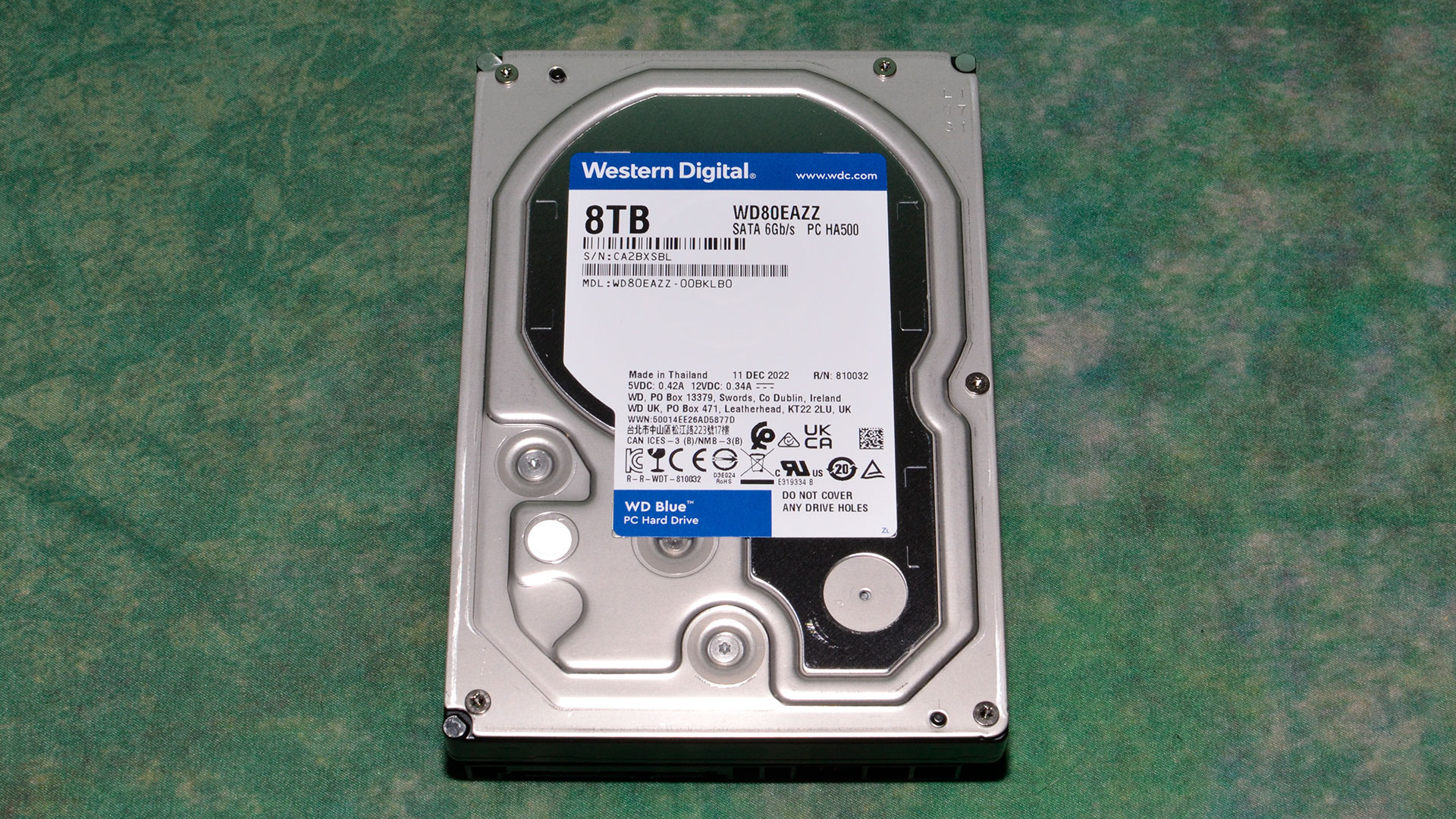
Specifications
The 8TB WD Blue is a basic entry-level HDD that provides enough performance to be useful for adding more storage to your system without breaking the bank. It stands out from other inexpensive drives by sticking with CMR technology at 8TB, and the Blue series also has CMR options at other capacities. The 8TB model also has a small bump to 5640 RPM over the 5400-RPM drives typically found in this price class. This makes it a clear winner over the Seagate BarraCuda alternative that employs slower SMR tech, but it falls short compared to faster drives like the 7200-RPM FireCuda. In its performance class, the WD Blue’s price point makes it compelling against all competitors.
The Blue has the usual software support we'd expect, but the industry-standard two-year warranty for this class of drive isn't impressive relative to more full-featured and expensive options, like the 7200-RPM FireCuda that has an additional three-year data rescue service. The Blue also has a smaller cache for its capacity, even compared to the BarraCuda, so this drive is meant to be a budget offering. It’s not the best drive to substitute for NAS use or heavier workloads, but it is perfectly suitable for adding more storage to your system for media, backups, and general tasks that don’t require SSD-class response or bandwidth.
The WD Blue HDD is available in multiple capacities, but it’s important you check the datasheet before buying. The 8TB model uses versatile CMR technology, has a 128MB cache, spins at 5640 RPM, and achieves an internal transfer rate of 185 MB/s. However, not all Blue models have CMR technology — other Blue drives come in both CMR and slower SMR flavors at each capacity point, so be sure to do your homework. Also, all smaller Blue models spin at either 5400- or 7200-RPM.
The competing 8TB Seagate BarraCuda uses slower and less versatile SMR recording tech, has a 256MB cache, spins at 5400 RPM, and delivers up to 190 MB/s. However, the BarraCuda uses SMR tech in all capacities, which is much less desirable.
The 8TB Blue is currently available for $109.99, making it the best buy for its target use cases of bulk data and archival storage. Both it and the BarraCuda have a short two-year warranty.
Software and Accessories
The WD Blue HDD comes with a free downloadable WD Edition of Acronis True Image for drive cloning. The drive is also supported in the downloadable Western Digital Dashboard, which provides diagnostic information and firmware updates. This suite is comparable to Seagate's competing software.
A Closer Look

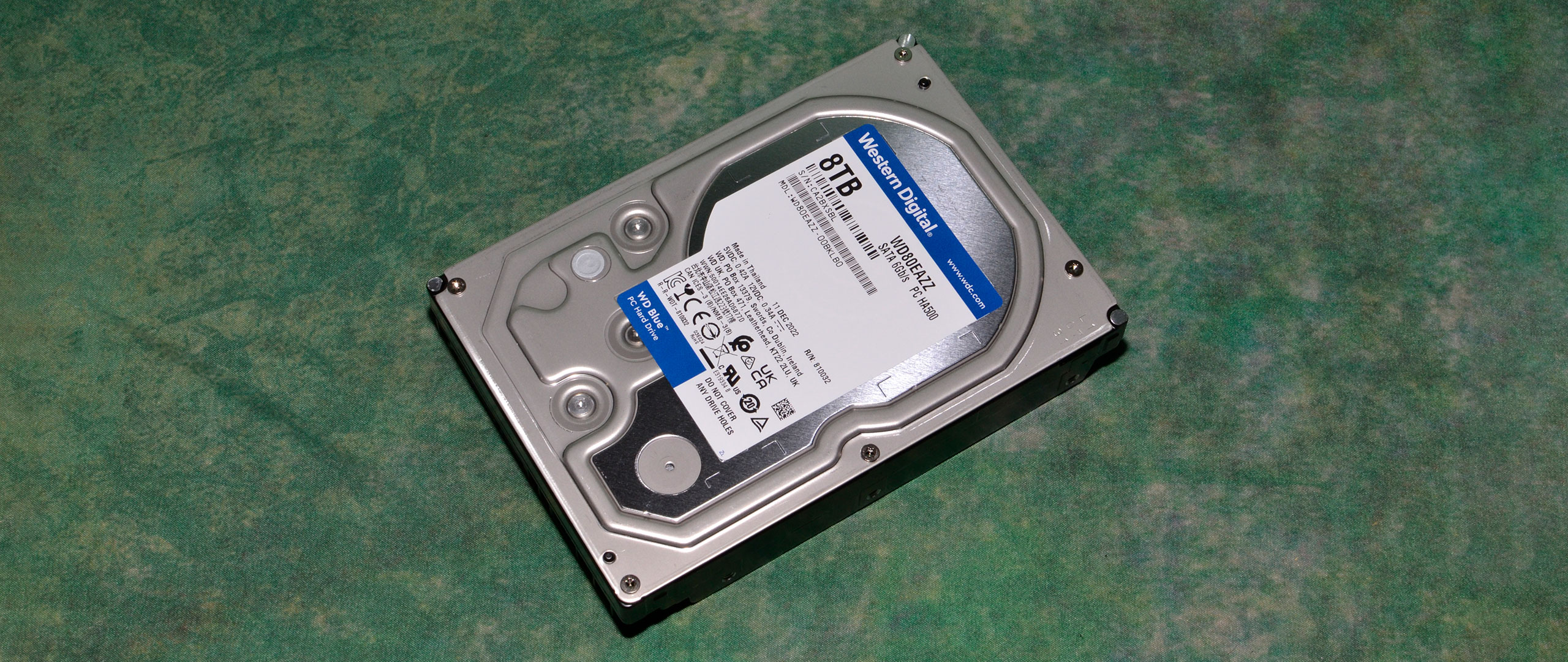

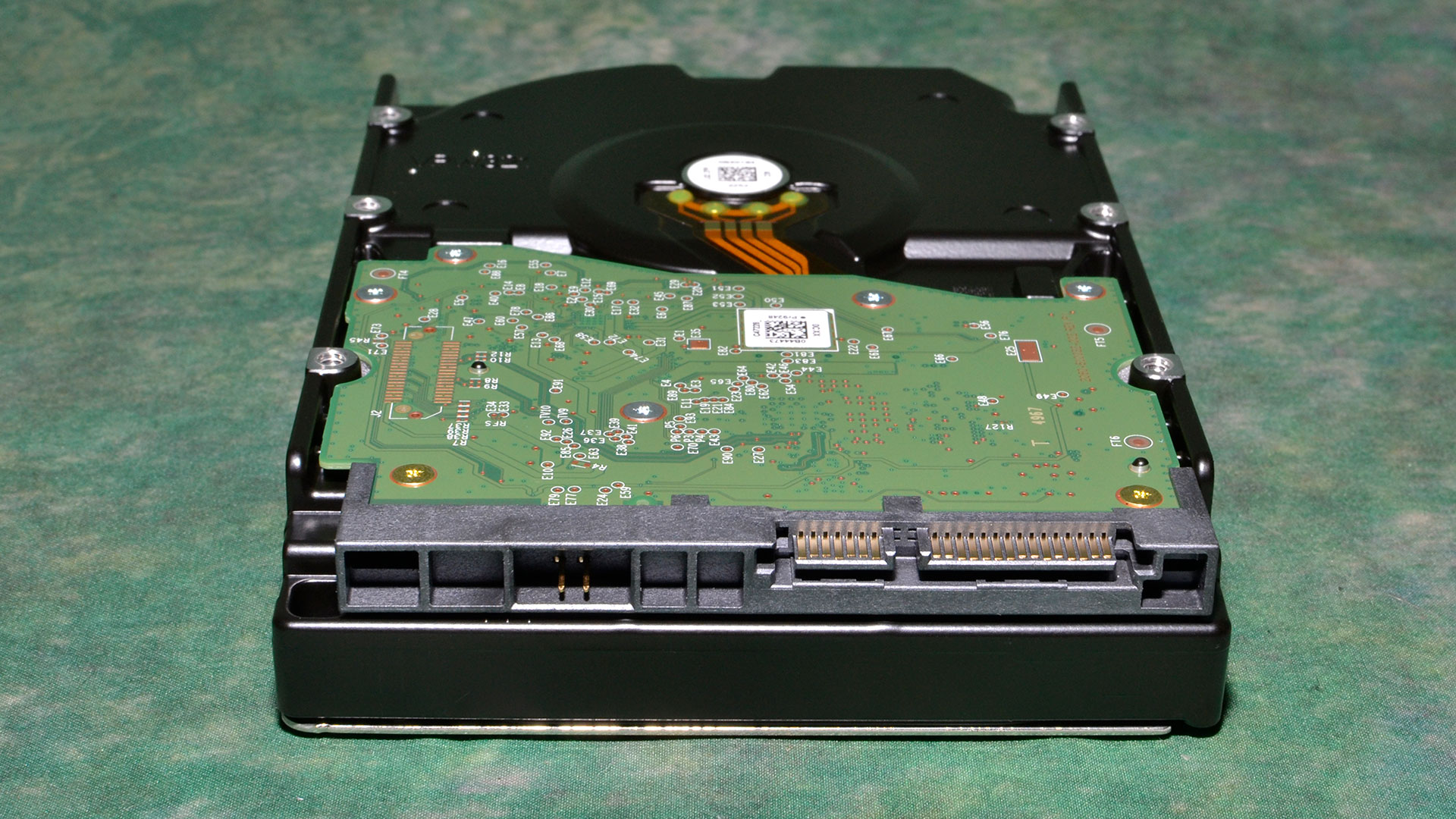
The WD Blue is what you'd typically expect of a 6 Gb/s SATA hard drive and comes adorned with the familiar Western Digital label with coloring to match the drive’s series. WD’s Blue SSDs and HDDs are entry-level storage options designed to provide more capacity on your system without any hard sacrifices.
MORE: Best SSDs
MORE: Best External SSDs and Hard Drives
MORE: How We Test HDDs And SSDs
MORE: All SSD Content
Comparison Products
The 8TB WD Blue HDD competes with other 8TB hard drives like the Seagate BarraCuda, the older HGST UltraStar He8, the Seagate IronWolf Pro 8TB, and the Seagate FireCuda. We also included larger 20TB drives in our test pool, like the WD Red Pro, the Seagate Exos X20, the Seagate IronWolf Pro, and the Seagate SkyHawk AI. The 14TB Seagate IronWolf Pro and 12TB WD Red Plus round out the list.
Trace Testing - 3DMark Storage Benchmark
Yes, gaming isn't the preferred use case for this class of hard drives, but we include these tests for perspective. Built for gamers, 3DMark’s Storage Benchmark focuses on real-world gaming performance. Each round in this benchmark stresses storage based on gaming activities, including loading games, saving progress, installing game files, and recording gameplay video streams.
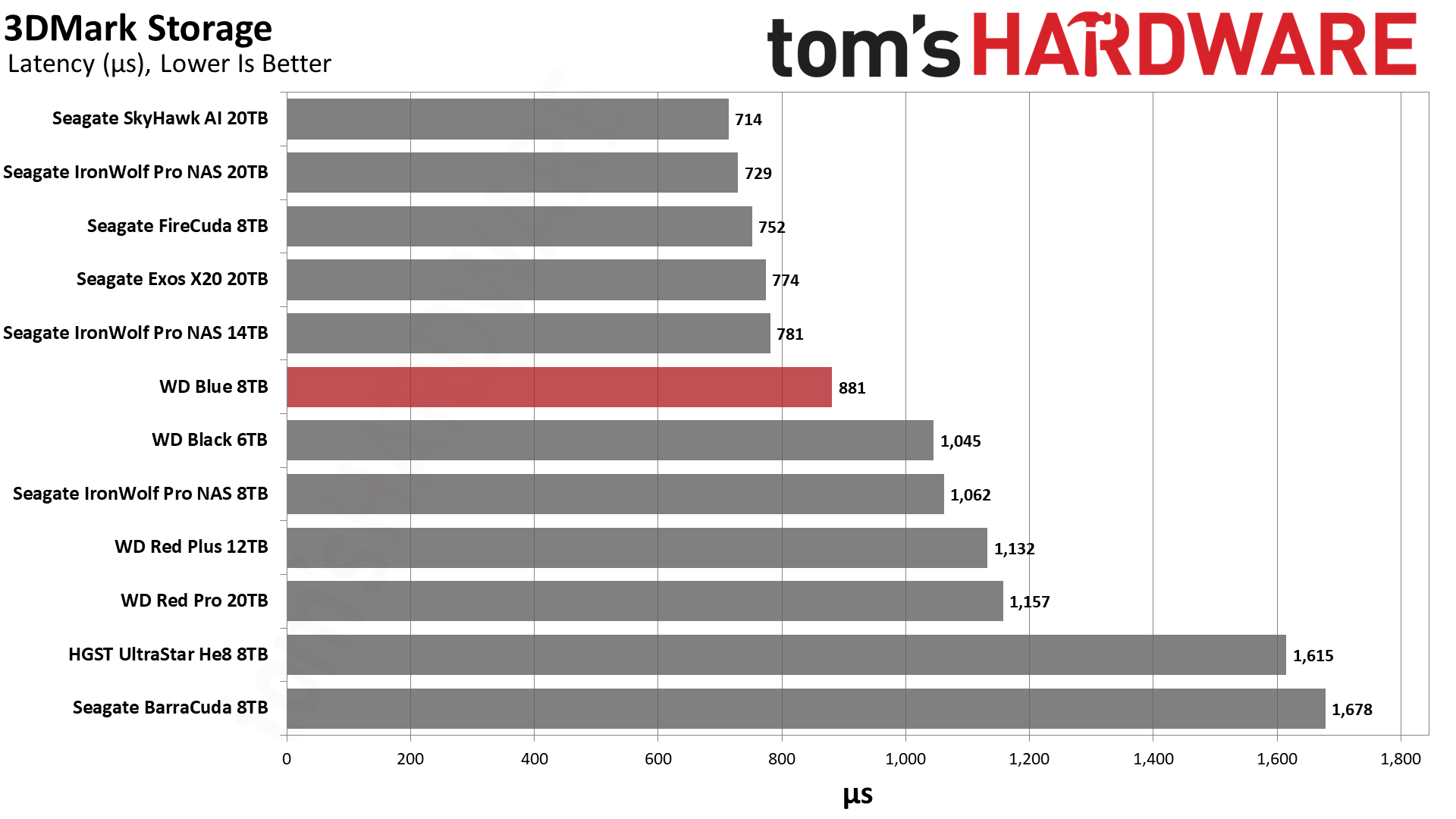
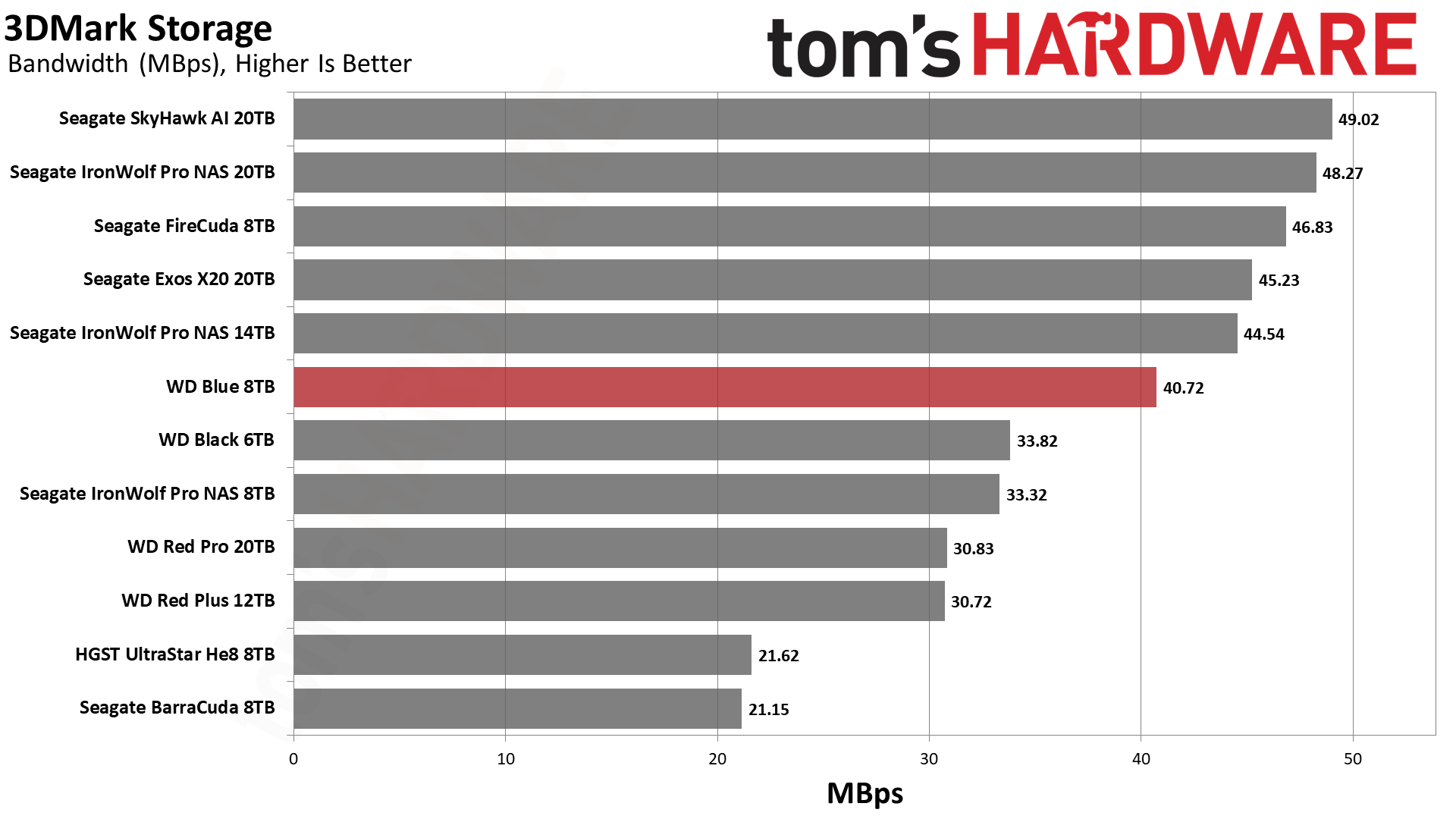
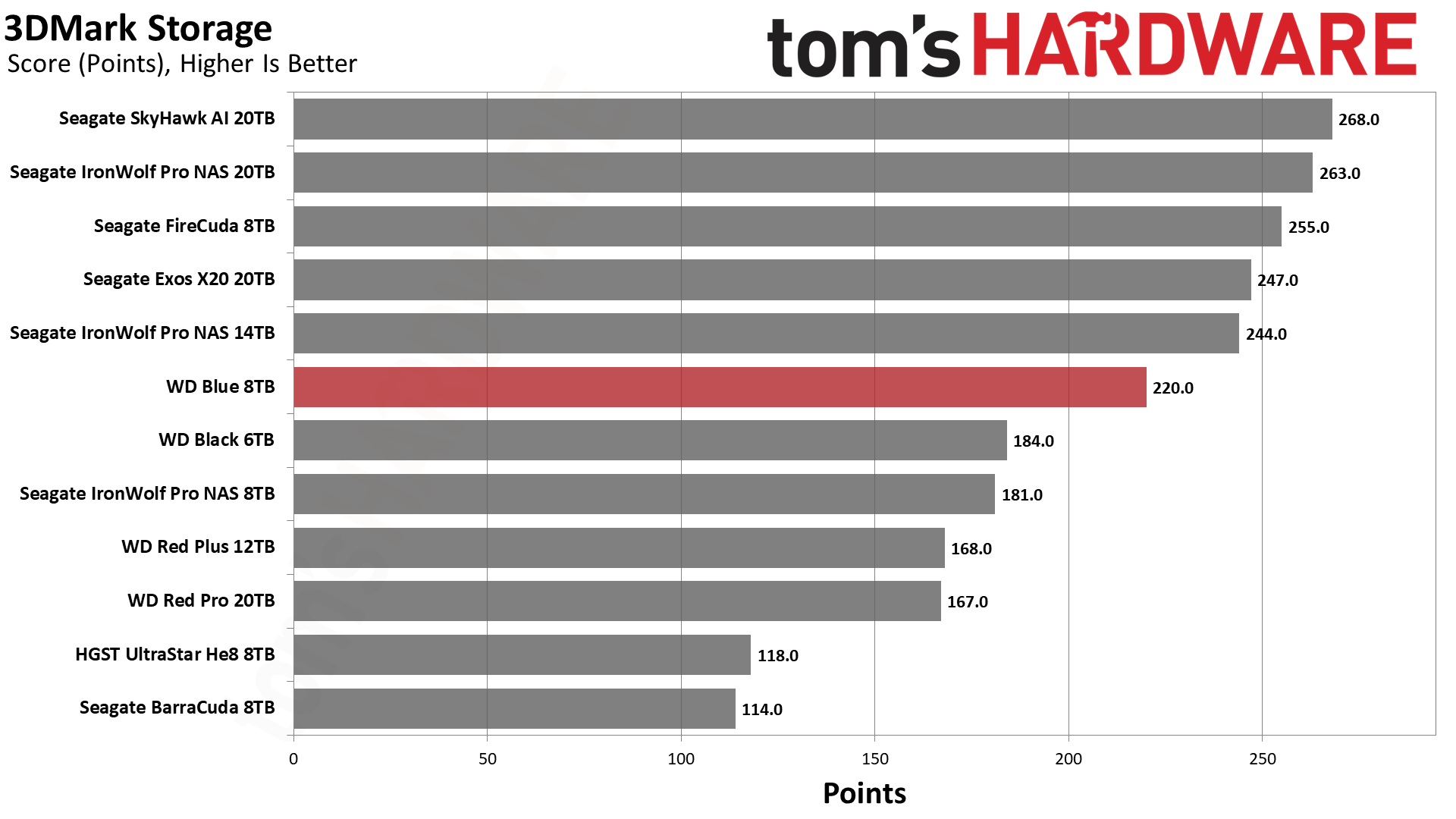
The WD Blue ends up in the middle of the pack in 3DMark. As expected, it handily beats the SMR-equipped 5400-RPM BarraCuda but falls shy of the 7200-RPM FireCuda.
Trace Testing – PCMark 10 Storage Benchmark
PCMark 10 is a trace-based benchmark that uses a wide-ranging set of real-world traces from popular applications and everyday tasks to measure the performance of storage devices.



The Blue is again in the middle of the pack with PCMark 10, but its performance isn't bad, given its spindle speed and pricing.
Transfer Rates – DiskBench
We use the DiskBench storage benchmarking tool to test file transfer performance with a custom 50GB dataset. We copy 31,227 files of various types, such as pictures, PDFs, and videos, to a new folder and then follow up with a reading test of a newly-written 6.5GB zip file.

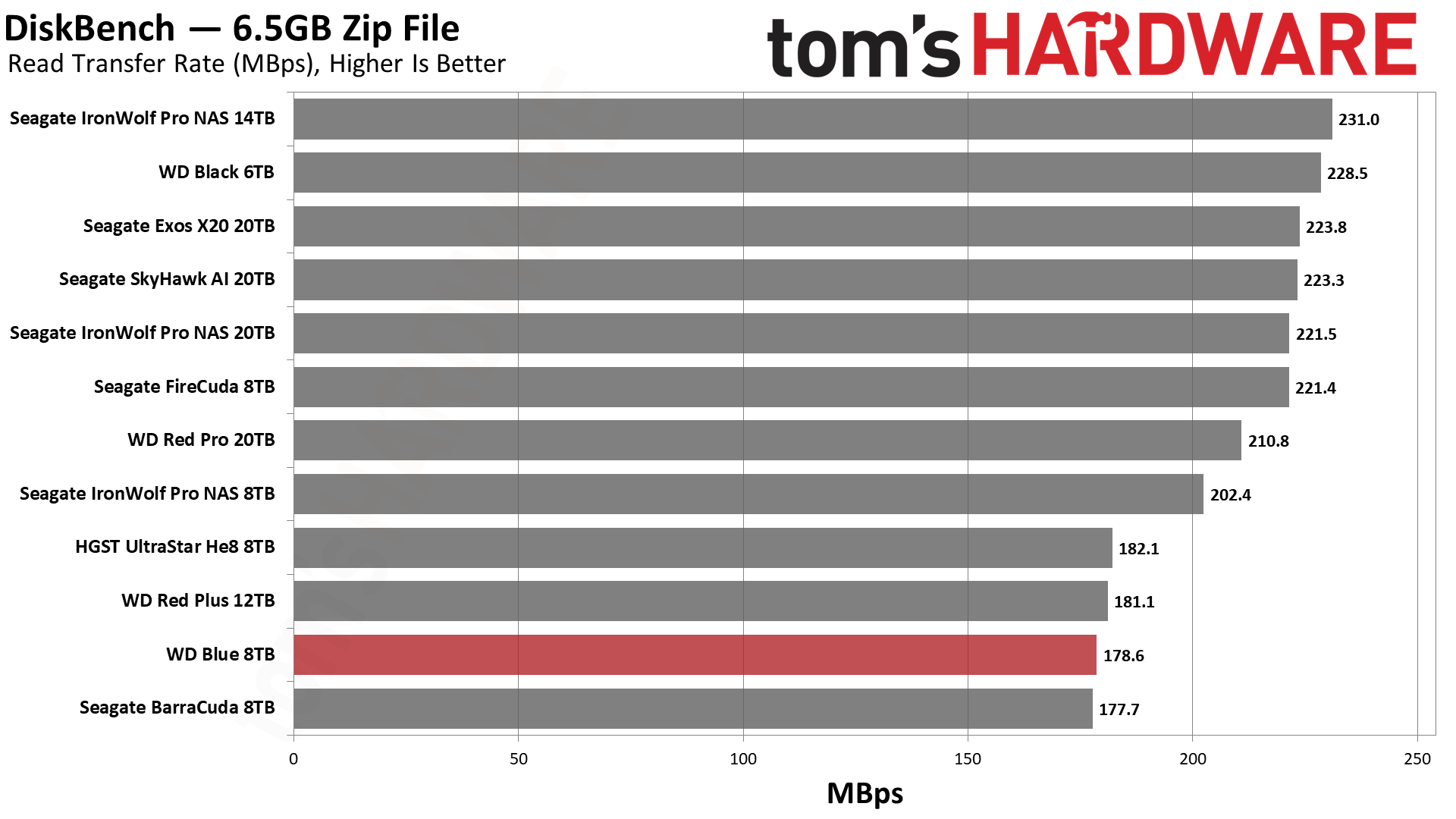
Here the Blue's 5640-RPM spindle speed hinders its performance as it falls behind all of the 7200-RPM drives and the larger Red Plus. It still manages to beat the SMR-equipped BarraCuda and older UltraStar HE8, though.
As expected with this class of drive, the Blue's copy speed is fairly unimpressive. You should factor this in when selecting a drive to purchase — a more expensive 7200-RPM model is a better fit if you're looking for faster file transfer performance.
Synthetic Testing - ATTO / CrystalDiskMark
ATTO and CrystalDiskMark (CDM) are free and easy-to-use storage benchmarking tools that storage vendors commonly use to assign performance specifications to their products. Both of these tools give us insight into how each device handles different file sizes.
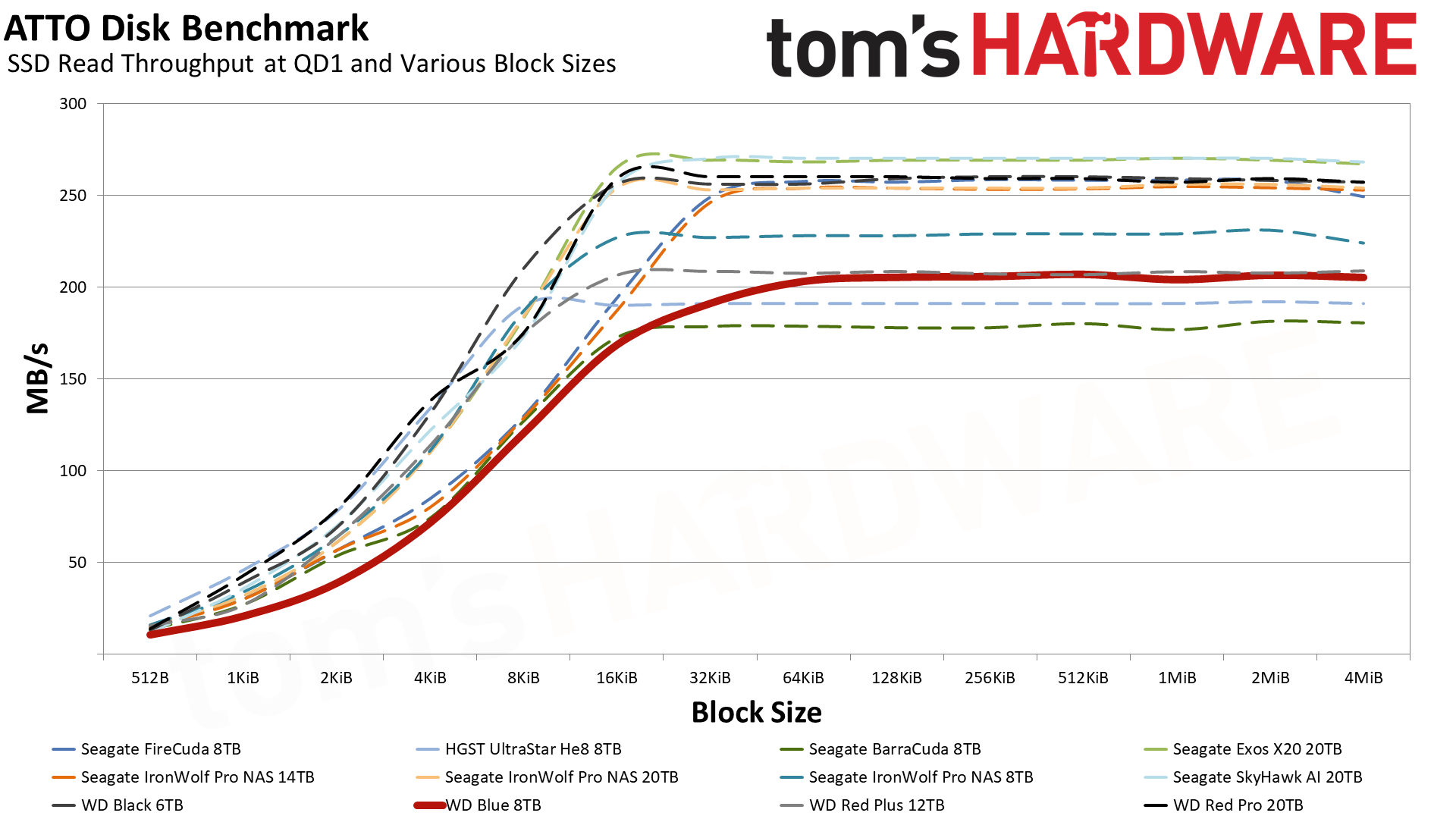


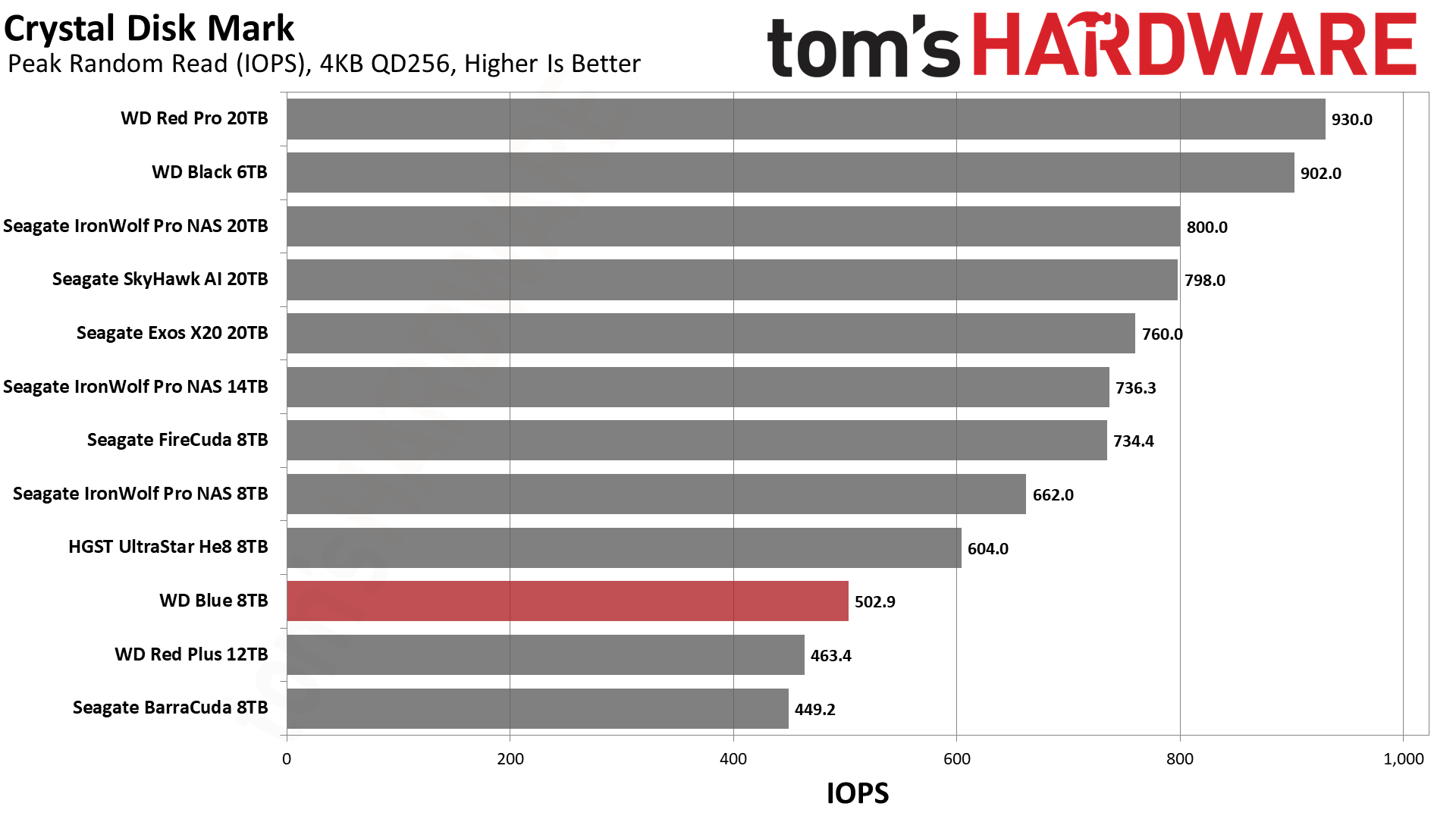

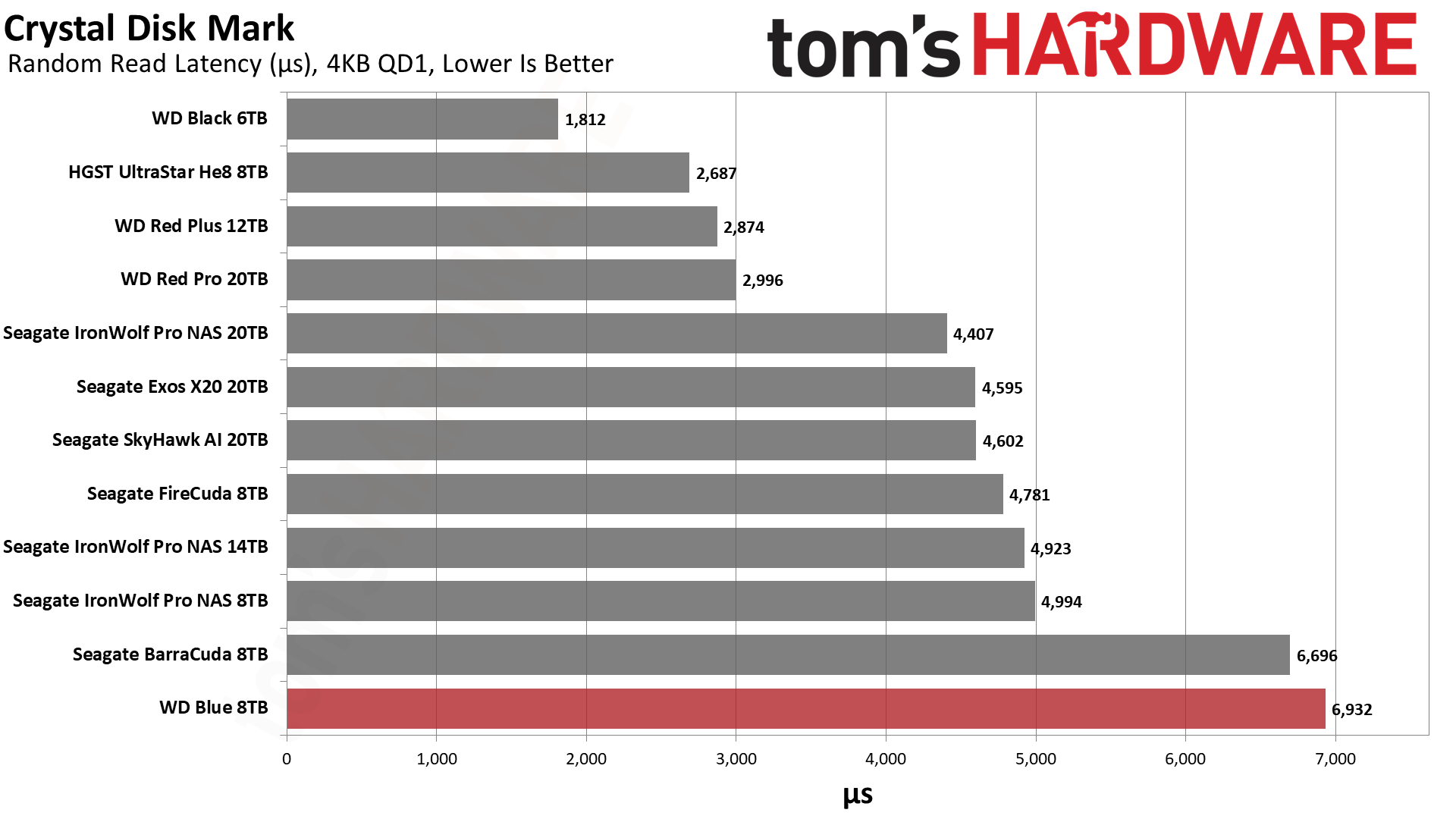

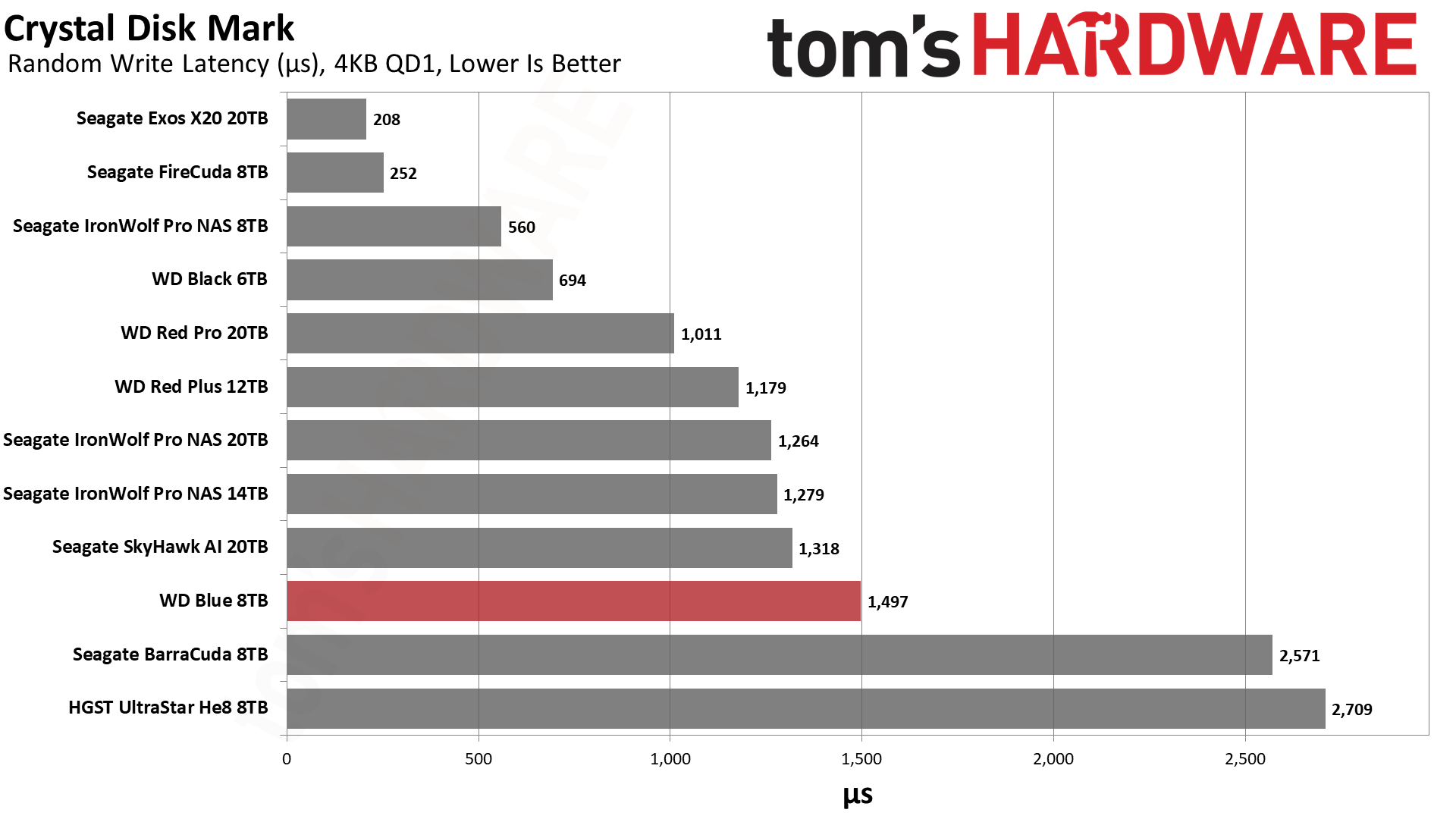


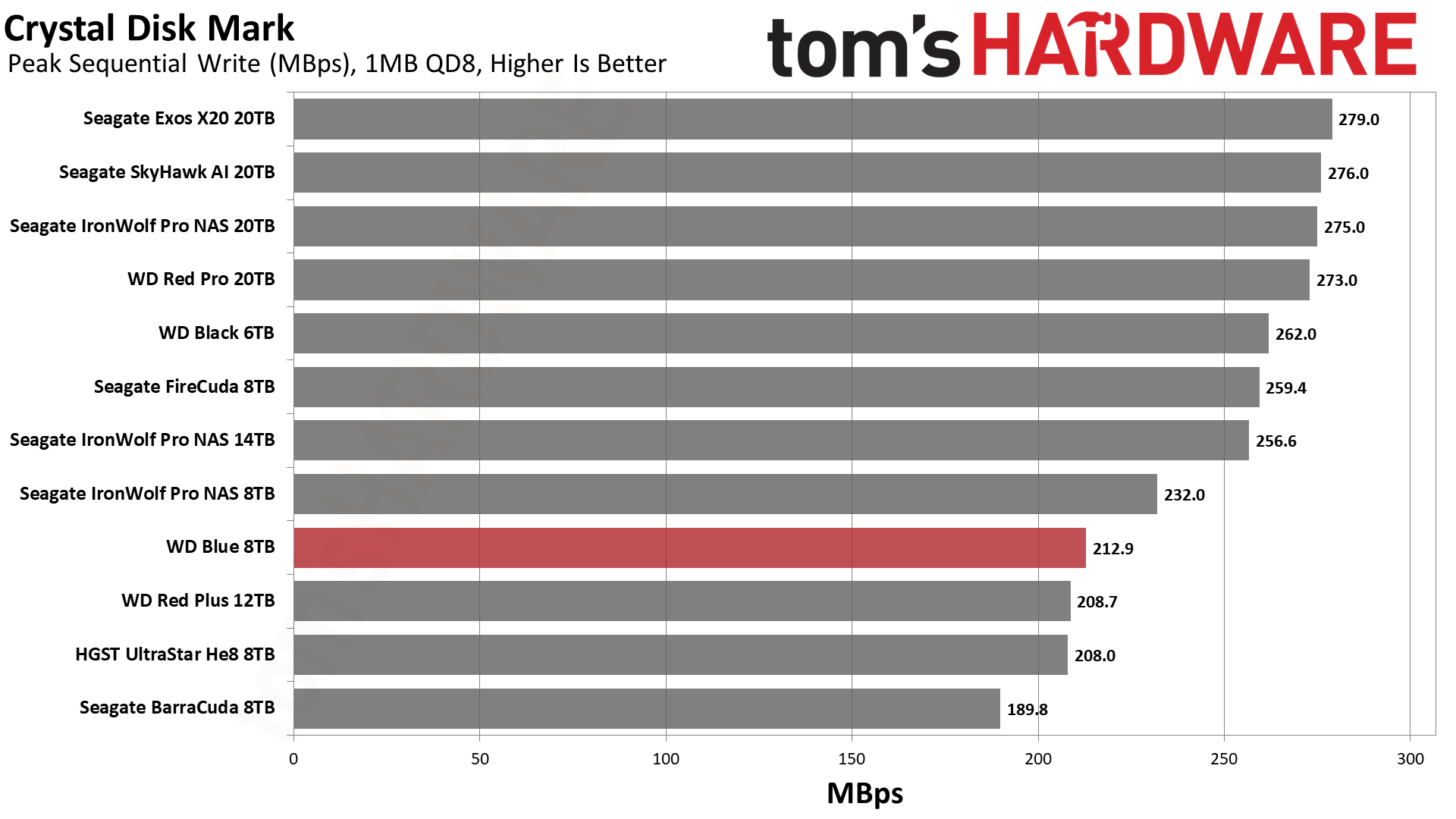

The Blue has a weak showing in ATTO, but this is expected, given its slower spindle speed. Sequential speeds are also lower in Crystal Disk Mark but high enough for a hard drive’s intended use. Random performance and latencies are also impacted by RPM, and here the Blue does poorly.
It's important to remember that this class of drive is tuned for the larger file sizes typically found in archival, backup, and bulk data storage applications. The WD Blue performs well in those types of tests, showing its advantage over the competing Seagate BarraCuda. The disadvantage of SMR tech is also clearly evident in the second image in the above album, where the SMR-equipped BarraCuda's write speed suffers tremendously at all block sizes.
Sustained Write Performance
Official write specifications are only part of the performance picture. Most HDDs implement a write cache which is a fast area of volatile memory such as DRAM. Sustained write speeds directly hit the platters and tend to be consistent. There are exceptions to both of these statements, as there are SSHDs (flash-containing hybrid HDDs), OptiNAND drives, and SMR drives that deviate from the traditional configuration. We use Iometer to detect the maximum sustained write speed of the HDD.

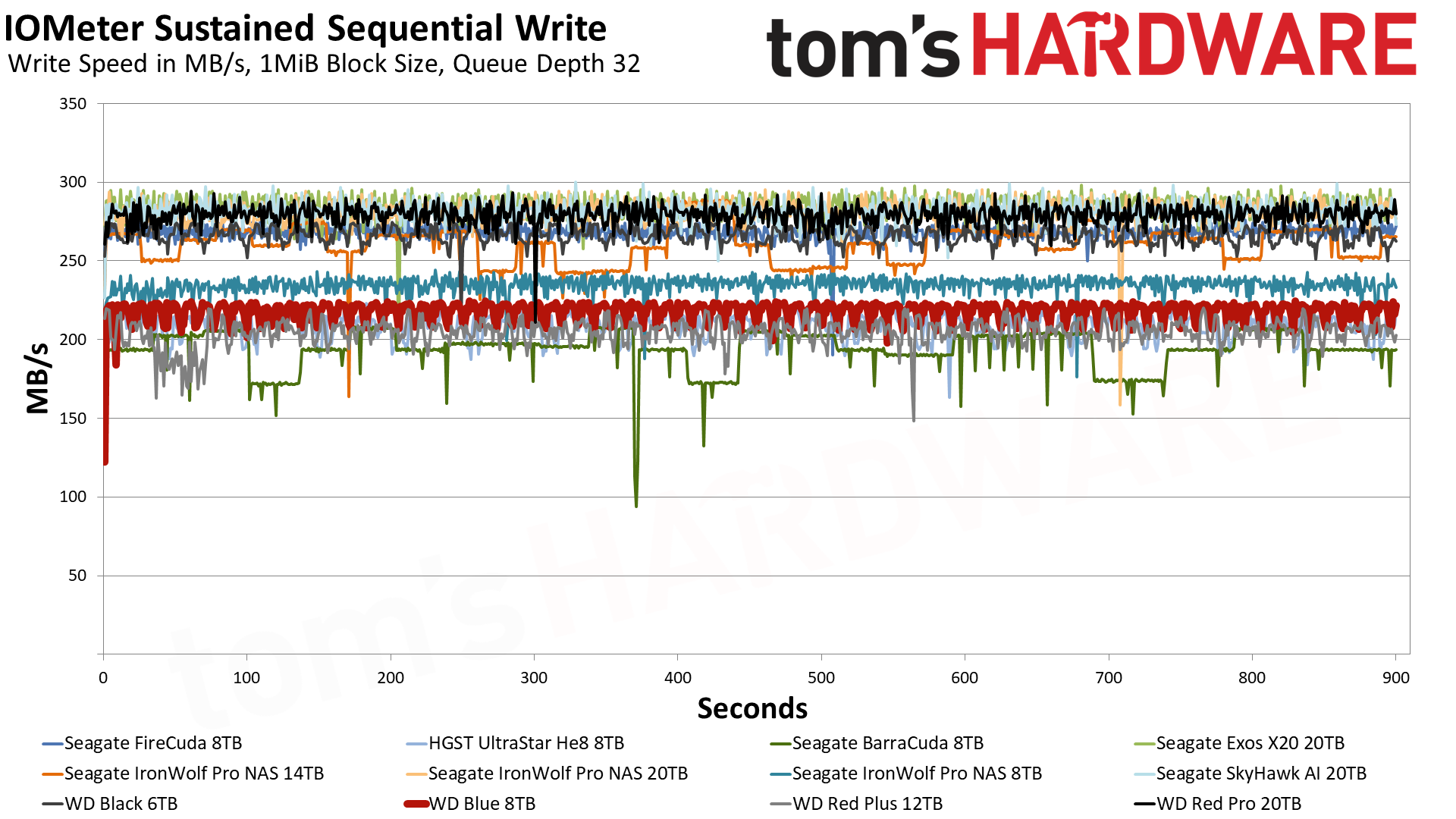
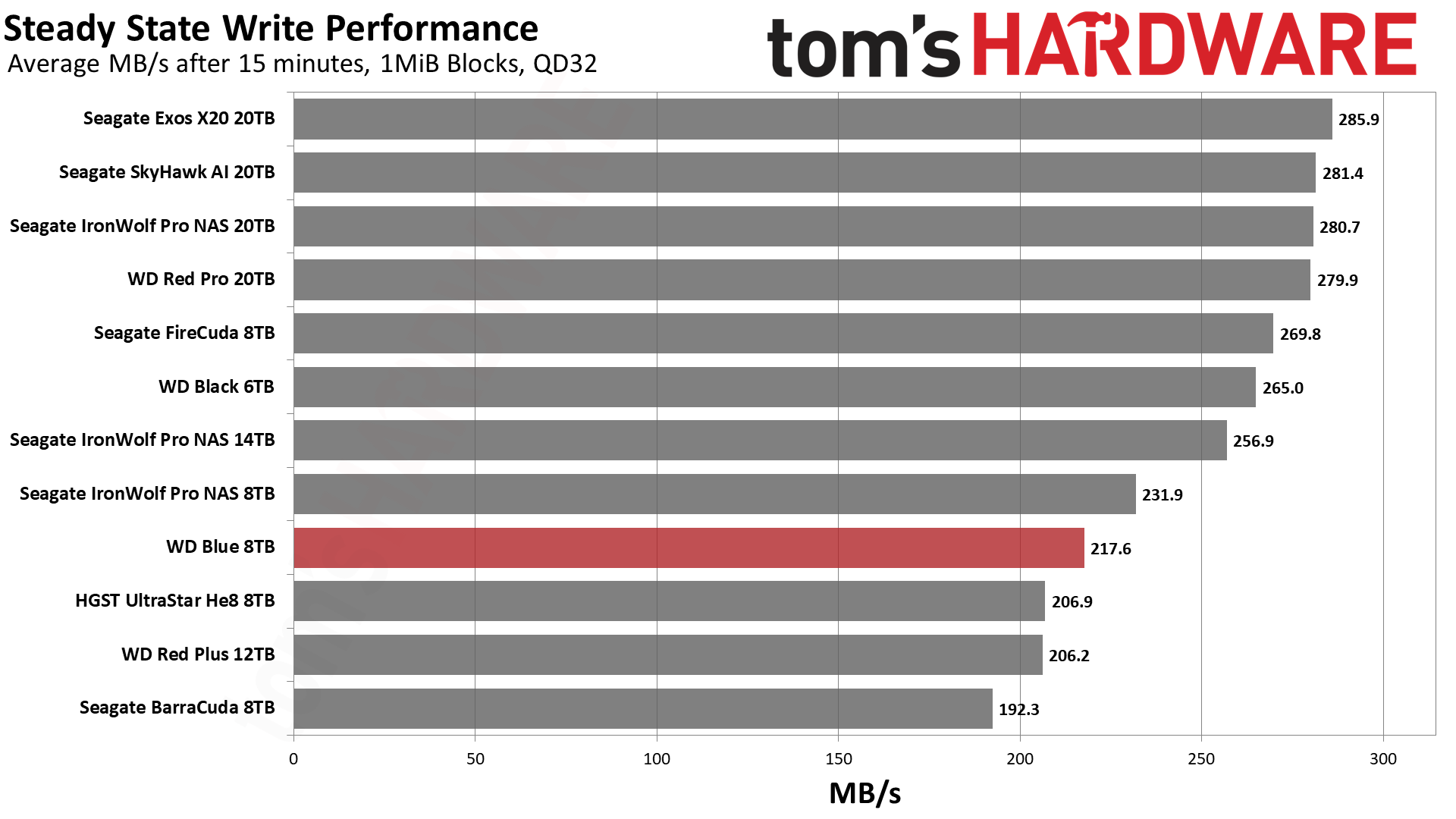
The Blue’s write performance is as expected and good enough for use as media storage, backup, archival use, etc. It is also sufficiently fast to store game streams and the like. Its write speed is more consistent than the SMR Seagate BarraCuda, and there’s no reason to pick the BarraCude over the Blue if you want a well-rounded HDD.
Power Consumption
We use the Quarch HD Programmable Power Module to gain a deeper understanding of power characteristics. Idle power consumption is an important aspect to consider, especially if you're looking for a laptop upgrade as even the best ultrabooks can have mediocre storage.
Some drives can consume watts of power at idle while better-suited ones sip just milliwatts. Average workload power consumption and max consumption are two other aspects of power consumption, but performance-per-watt is more important. A drive might consume more power during any given workload, but accomplishing a task faster allows the drive to drop into an idle state more quickly, ultimately saving energy.
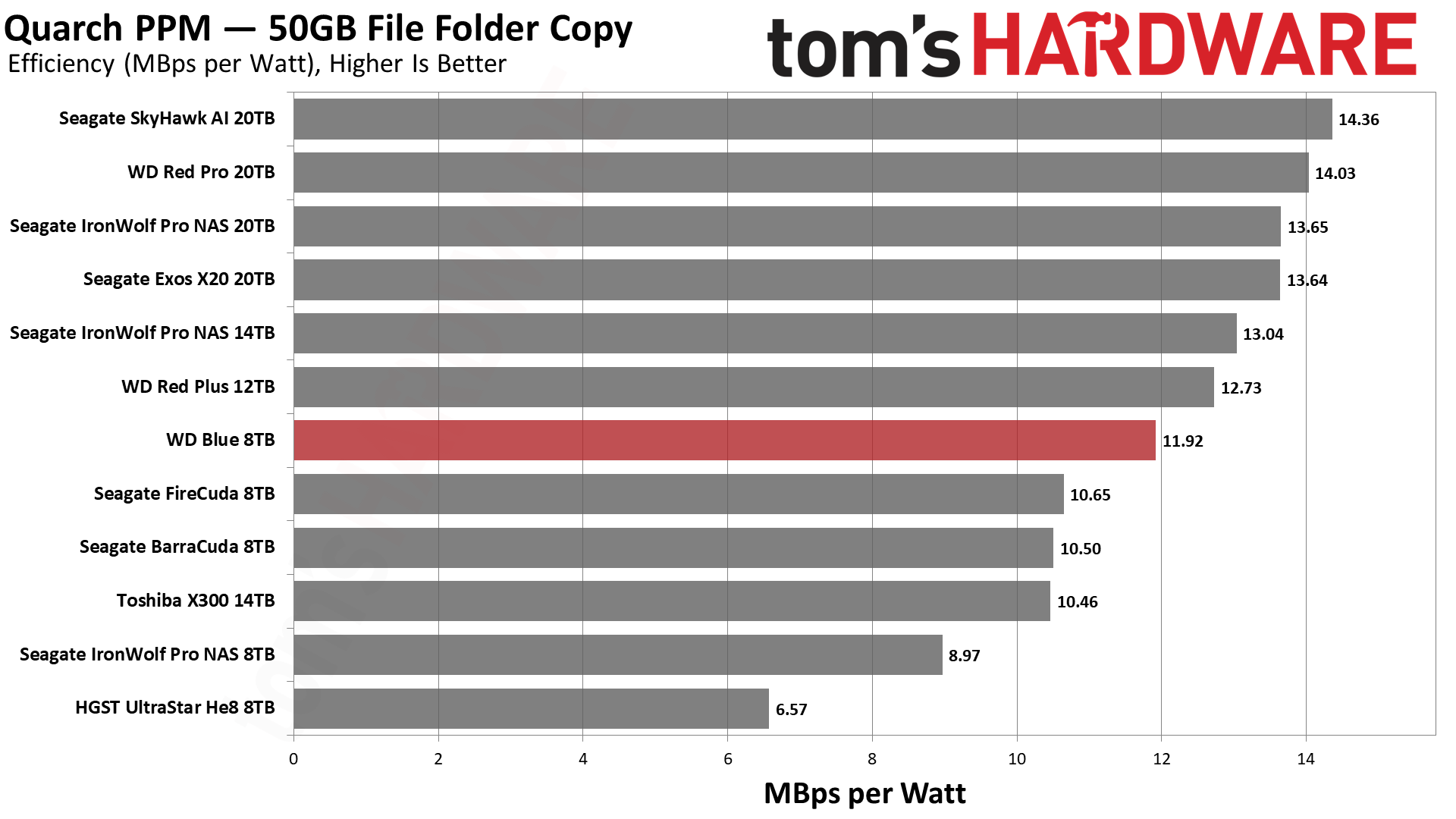

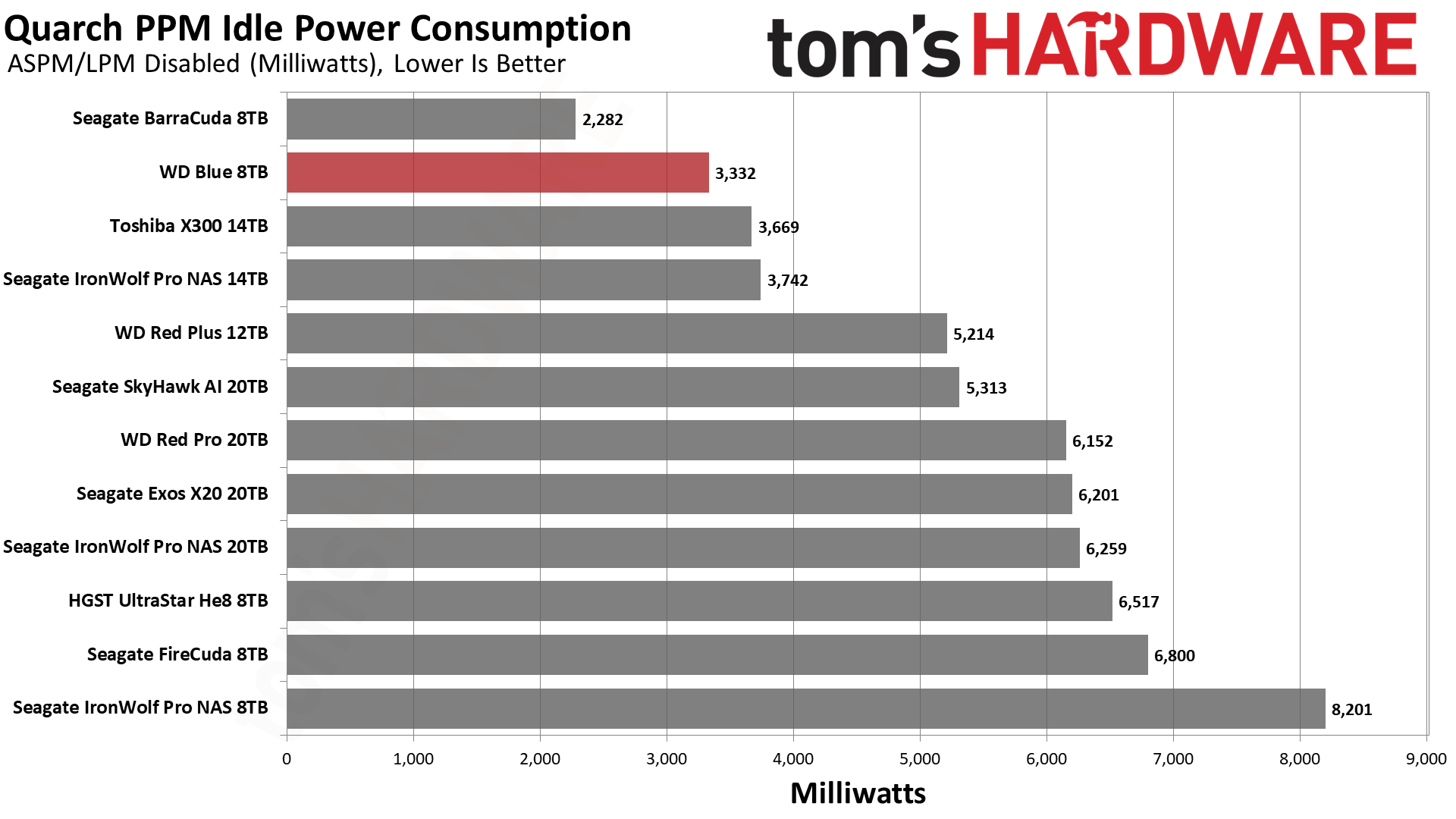

The Blue has low peak and average power consumption with moderate efficiency. Its 5640-RPM spindle speed reduces its performance for this workload, but its results are still reasonable. You'll notice the BarraCuda has a lower average power consumption during the operation, but its reduced performance results in less efficiency. Conversely, the BarraCuda has a significantly lower idle power draw, which is typically more important for backup and archival use cases.
Test Bench and Testing Notes
Conclusion
Hard drive fanatics will instantly recognize the WD Blue lineup as the best way to get affordable “good enough” storage. WD Blue HDDs drop down to a lower RPM, which can be good from a heat and noise perspective, but the slower spindle speed also results in lower performance. The Blue drives also have a smaller DRAM cache and a less expansive warranty than the bolder, high-performance Black line.
WD has also snuck SMR technology, which has significant drawbacks, into the budget series drives like the Blue, but the company also offers CMR SKUs, including this 8TB model. In contrast, Seagate’s entire BarraCuda lineup uses the less-performant SMR tech. This gives the 8TB Blue an edge if you’re looking for a simple HDD to add more storage capacity, especially considering its lower pricing.
If you’re looking for more performance, we recommend the 7200-RPM Seagate FireCuda instead. It has a better warranty, providing extra peace of mind. If you need more capacity than the Blue and FireCuda lines offer — they top out at 8TB — you need to step up to NAS or enterprise drives, or more likely, the Toshiba X300 and X300 Pro series of drives made for high-end desktops and workstations. Most NAS drives are also positioned to serve as high-capacity HDDs for performance-focused desktop PCs, but conversely, you can save some money and run with the Blue if the drive will only see light use.
In fact, that’s exactly where the Blue shines, as it offers CMR technology at a good price. A longer warranty would be nice, and Seagate’s data recovery service with the FireCuda makes the jump up to a higher tier worthwhile for some. On the other hand, no data should be stored without a backup, so the value of the data recovery service might hinge on how robust your data backup plan is.
The Blue’s performance is as expected from a 5400-RPM-class HDD, which is to say lackluster, but it is far better than SMR drives; the Blue's standard CMR technology gives you more flexibility in how you can use the drive. Overall, the 8TB WD Blue is a basic, entry-level HDD that fits its niche well.
MORE: Best SSDs
MORE: Best External SSDs and Hard Drives
MORE: How We Test HDDs And SSDs
MORE: All SSD Content







